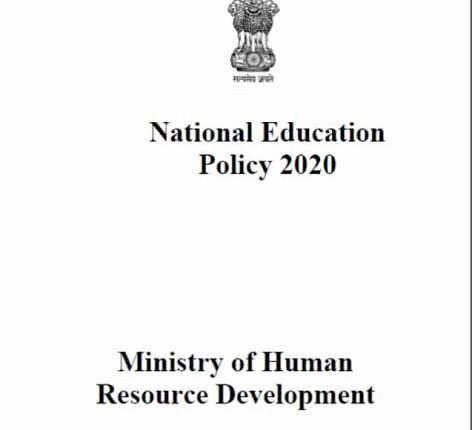NEP 2020: These Are The 10 Changes In Current Education System
New Delhi: India has changed its education policy after 34 long years. The new policy would also see an overhaul of the system in place in the higher education. The NEP 2020 intends to integrate the Indian education system with global patterns, do away with “rote-learning” and instill confidence and nationalistic pride among students.
Here’s a comprehensible list of changes that the current system will undergo:
- India currently spends 3.84 per cent of its GDP on education. But the education sector will receive 6 per cent of the total GDP in the coming years
- India’s Gross Enrollment Ratio for the year 2018-19 has been 26.3 per cent. The Education Ministry now targets to get that ratio to 50 per cent by 2035.
- India’s current schooling structure is 10+2+3 while NEP 2020 is going to change that structure to 5+3+3+4.
- The current bachelor’s programme in India is for three years and the master’s programme is two years. The NEP will integrate into a five-year Bachelor’s/ Master’s programme and discontinue MPhil.
- Currently, separate state exams are held for admissions into institutions for higher education. Hereafter, the National Testing Agency (NTA) will conduct entrance examinations for admissions to universities across the country, similar to the SAT in the United States.
- The medium of instruction in schools currently depends on school administrations. The medium of instruction until at least class V, but preferably till class VIII and beyond, will now be the home language/ mother-tongue/ local language/regional language.
- Students can choose to enroll in vocational courses that are available in certain colleges, after schooling. But according to the new policy, at least 50 per cent of learners shall have exposure to the vocational education through school and higher education system with internships from class VI.
- Earlier, subjects like arts and humanities were found as optional for enrollment. But with the new regulations, engineering institutions will move towards more holistic and multidisciplinary education with more arts and humanities.
- Coding was introduced to students after class X, depending on the educational syllabus and board. But now, the students will be allowed to take up coding from class VI.
- There are fixed subjects that student can opt for in their board exams, depending on the educational board. But now, the students will be able to choose any of the subjects in which they take Board exams, depending on their own interests.


Comments are closed.